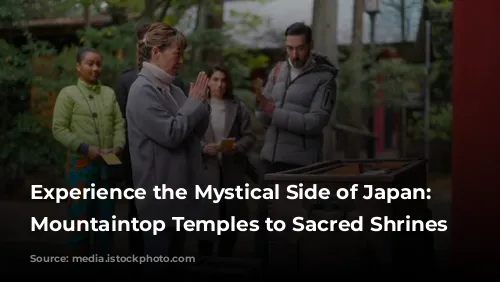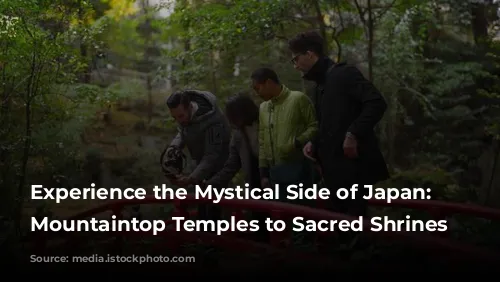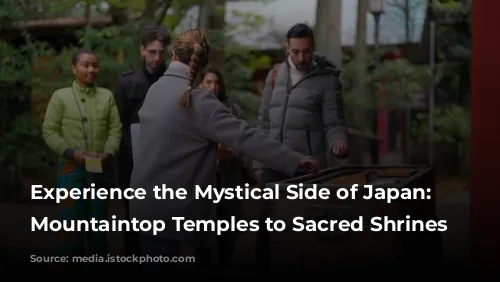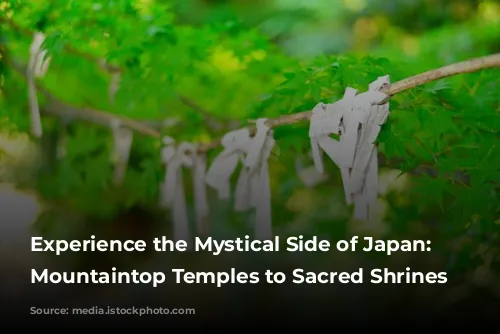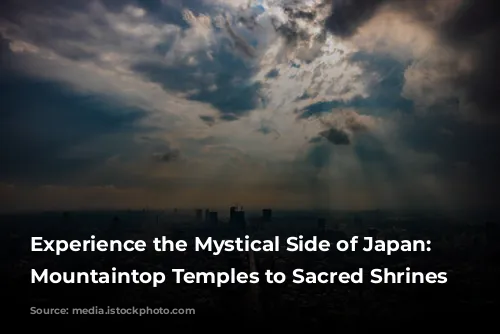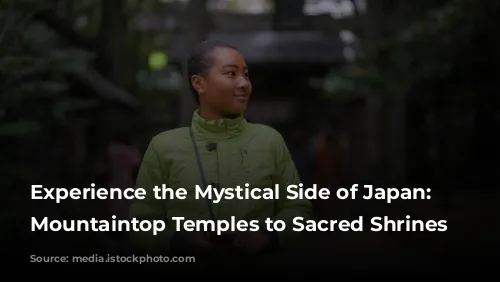Ready to embark on a journey through the heart of Japanese spirituality? This land of ancient traditions and breathtaking landscapes offers unique experiences that will leave you feeling refreshed and connected to something bigger than yourself. From the dramatic peaks of Mount Mitoku to the serene shores of Ise, let’s explore some of the most spiritually significant places in Japan.
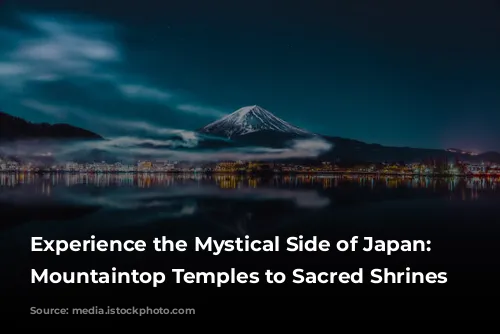
A Breathtaking Balancing Act: The Cliffside Nageiredo Temple
Mount Mitoku in Tottori Prefecture is a hiker’s paradise. It’s where adrenaline junkies can test their limits while soaking in the rugged beauty of the region. But the real draw is the Nageiredo Temple, a national treasure nestled precariously on a 900-meter high cliff. Legend has it that the Buddhist monk En no Gyoja used magic to place the temple there during the Heian period (794-1185)! Whether you believe in magic or not, Nageiredo is a marvel of ancient architecture. The temple has been attracting pilgrims and nature lovers for centuries, offering a chance to connect with the spiritual side of life.
Getting there: Take a bus from JR Kurayoshi Station to Mitokusan stop.
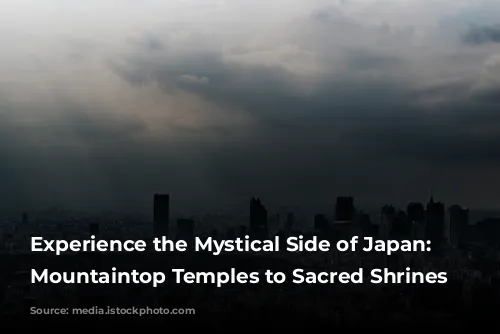
Where the Gods Gather: Izumo Taisha Shrine
On the rugged coastline of Shimane Prefecture lies the Izumo Taisha Shrine. It’s one of Japan’s most important and revered shrines, with a captivating folk legend. Every year, eight million Shinto gods from across the country make their way to Izumo Taisha during the Kamiarizuki (Month of the Gods), an event that takes place between the 10th and 17th days of the 10th lunar month (typically November). It’s a cosmic gathering where they determine the fate of the nation! Even if you can’t make it for the Gods’ Month, Izumo Taisha is a breathtaking site. The sheer size of the shrine is impressive, and nearby attractions like the Bentenjima rocks on Inasanohama Beach add to the charm.
Getting there: Walk 10 minutes from Izumo Taishamae Station on the Ichibata Line.
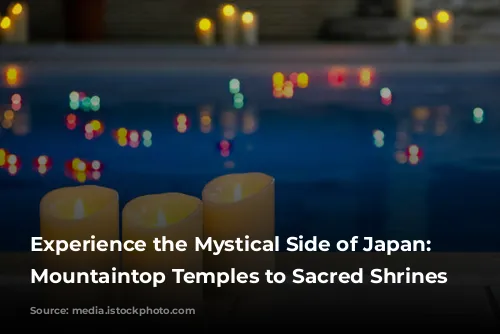
From Ancient Temples to Charming Omotesando: Naritasan Shinsho-ji Temple
While Chiba’s Narita City is best known for its international airport, it’s a hidden gem rich in history and spiritual significance. Located close to Tokyo and offering a stunning mix of natural beauty and historical charm, it’s a must-see day trip destination.
The Naritasan Shinsho-ji Temple is a Buddhist temple complex founded in 940. Its sprawling grounds feature impressive structures like two pagodas and a tranquil park that blends Japanese and European elements. Don’t miss the lively omotesando shopping street! It’s a kilometer-long paradise of local shops and vendors selling unique snacks and souvenirs. And since Narita is famous for unagi (eel), be sure to indulge in this delicacy before heading home.
Getting there: It is about a 20-minute walk from Narita Station.
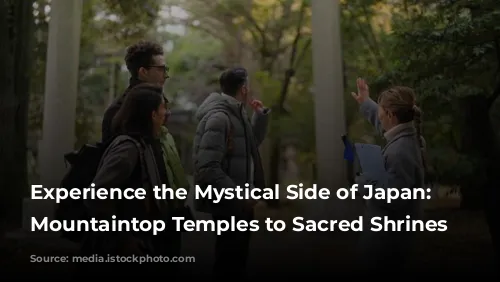
A Journey to the Afterlife: Mount Osore
For a unique and somewhat spooky spiritual experience, head to Mount Osore in Aomori Prefecture. Known locally as Osorezan (Fear Mountain), it’s considered the closest thing to hell on Earth. The landscape itself is as dramatic as its name suggests – hidden viper pits, sulfur-thick air, and poisonous lakes. But there’s also a Buddhist temple! The temple was established by the monk Ennin in 826 CE after he was struck by the landscape’s resemblance to the Buddhist imagery of the afterlife. Nearby is the Sanzu River, known as the Japanese River Styx. Visit between July 22 and 24 to encounter Itako, blind female mediums who, after rigorous spiritual training, can speak with the dead. Mount Osore is a place where the line between the living and the dead blurs.
Getting there: From Mutsu Bus Terminal take the bus to Osorezan.
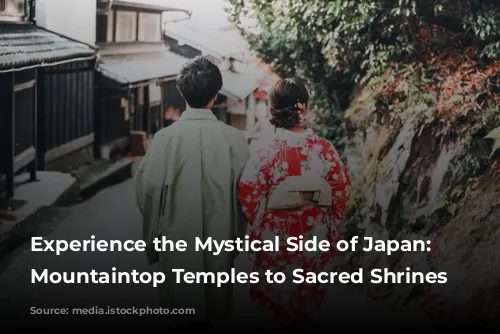
Find Your Inner Peace: Vipassana Silent Retreat
If you’re seeking inner peace and a break from the hustle and bustle of life, the Vipassana Silent Retreat might be just what you need. Offered entirely for free by the Dhamma Adicca Vipassana Meditation Centres in Chiba and Kyoto, this ten-day retreat offers a unique opportunity to explore the mind through meditation. Participants take a vow of silence, spending their days meditating and listening to the teachings of a Vipassana guru. It’s a popular experience attracting people from all walks of life looking to detox their minds and bodies. The retreat blends the serenity of Japanese landscapes with the ancient Indian technique of Vipassana meditation, creating a harmonious experience. The course is offered in English and Japanese and is run entirely on a volunteer and donation basis.
Getting there: Take the JR Sotobo Line bound for Mobara Station.
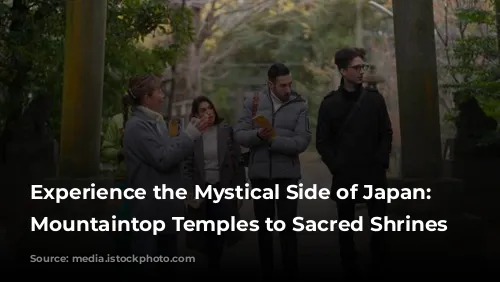
Walk the Path of the Mountain Monks: Dewa Sanzan
The majestic Dewa Sanzan (Three Mountains of Dewa) in Yamagata Prefecture are deeply rooted in the spiritual practice of Shugendo, a traditional Japanese folk religion based on mountain worship. Each of the three mountains – Mount Haguro (birth), Mount Gassan (death), and Mount Yudono (rebirth) – represents a stage in the Buddhist life cycle. Pilgrims often visit the mountains in this order.
The most fascinating figures here are the yamabushi (mountain monks). These monks are dedicated to achieving spiritual transcendence through intense physical and mental discipline, often meditating under waterfalls. Today, these mountains are open to visitors who can even train as a yamabushi during their visit. And don’t forget to visit the temples where you might find mummified monks preserved as a testament to the dedication of these spiritual warriors.
Getting there: It is about an hour by bus from Tsuruoka Station.
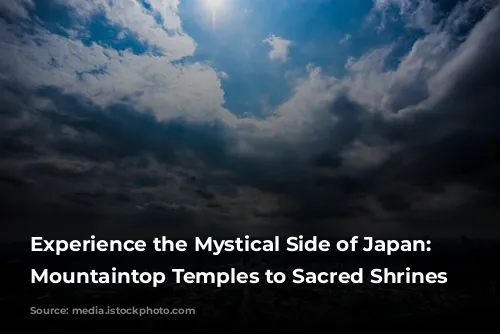
The Heart of Shintoism: Ise Jingu Shrine
Ise in Mie Prefecture is considered the most spiritually significant destination in Japan. Home to Shintoism, Japan’s national religion, Ise Jingu is a collection of shrines, including two main ones located a few kilometers apart. Naiku, the inner shrine, is the most sacred, believed to be around 2,000 years old. Legend tells the story of Yamatohime no Mikoto, the daughter of Emperor Suinin, who embarked on a mission to find the perfect place to worship the sun goddess Amaterasu. After 20 years, she arrived in Ise, where she heard Amaterasu’s voice saying, “(Ise) is a secluded and pleasant land. In this land, I wish to dwell.”
Every year, millions of pilgrims and visitors come to pay their respects at this sacred site. Every 20 years, the entire shrine complex is rebuilt in a grand celebration known as Sengu no Gi. The next Sengu no Gi will take place in 2033.
Getting there: From JR Iseshi Station, the temple is easily accessible by bus.
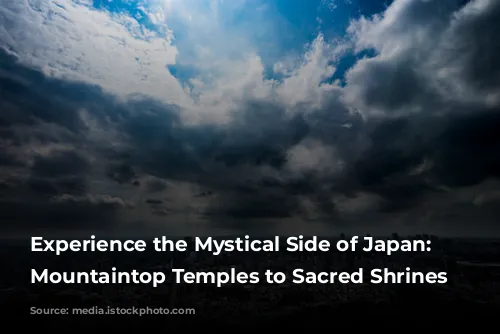
Respect the Sacred:
While all of these places welcome visitors, remember that they are still considered sacred spaces. Show respect for local customs and traditions during your visit. Be mindful of your surroundings and enjoy the unique spiritual energy these places offer.
